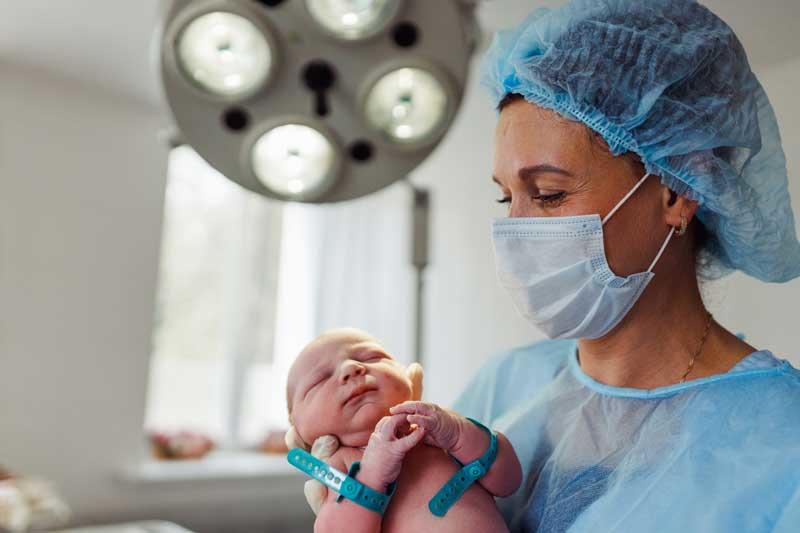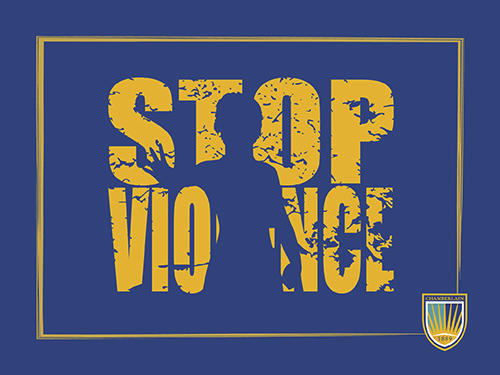Featured
Tags
Share
- Home / Blog / Tips for Students / What You Need to Know About Labor and Delivery Nursing
What You Need to Know About Labor and Delivery Nursing

A bachelor’s degree in nursing can help prepare you for this special career role.
Behind many mothers, there are the nurses who helped them give birth.
Labor and delivery (L&D) nursing is one of the most recognizable nursing specialties, and one that many RNs want to pursue. Like any specialty, though, it has its challenges and rewards.
“We don’t just rock babies all day,” said Crystal Paunan, DNP, CNE, a Chamberlain University instructor with more than 10 years of experience in labor and delivery nursing. “There’s a lot more to it than that.”
Let’s learn more about L&D nursing.
What Are the Responsibilities of a Labor and Delivery Nurse?
Most L&D nurses participate in the care of mothers and babies before (antepartum), during (intrapartum) and after (postpartum) birth. They provide medical and emotional support and keep doctors informed of any concerns and changes. Their responsibilities are varied but may include:1
- Monitoring the mother’s and baby’s vital signs
- Administering medications
- Timing contractions
- Assisting doctors during delivery
- Coaching mothers during labor and delivery
- Monitoring the newborn’s condition
- Educating patients and family members
“The doctor or midwife is not there all the time,” Paunan said. “The person that’s their go-to is that labor and delivery nurse.”
Is It Hard Being a Labor and Delivery Nurse?
L&D nurses will tell you it is hard but rewarding work. The hours can be long. L&D nurses generally work 12-hour shifts. But because of the bond they form with the laboring patient, it’s not unusual for nurses to stay past their shift change to be there when the baby is born.
Things change quickly during labor, and the unexpected can happen. So, the work can be stressful and intense. Being an L&D nurse requires patience and empathy and RNs doing this work may experience compassion fatigue. And while bringing new lives into the world can be joyful, L&D nurses also must be prepared for sad and difficult outcomes.
“I always tell people that it’s 99% good stuff,” Paunan said. “But when it’s bad, it’s really bad because you’re dealing with the loss of a baby or the loss of a mother.”
What Personality Traits Should an L&D Nurse Have?
Assertiveness is a must in this nursing career—and so is a sense of collaboration. L&D nurses are patient advocates, communicating a mother’s needs to the entire medical team.
“Nursing students are very impressed when they see the relationship between the L&D nurse and the doctor or midwife,” Paunan said. “It’s a team approach, not hierarchical. It’s not, ‘Doctor, what should I do?’ It’s, ‘This is my patient. This is what I need.’ ”
L&D nurses must have an inclusive outlook, as they care for all kinds of patients — from pregnant teens to women who are incarcerated.
“In our specialty, it’s important to remember that not every family is made the same way, and not every family has the same things,” Paunan said. “A nurse must be able to extend the same caring and empathy to all patients, no matter what the circumstances are.”
Are There Similar Careers to L&D Nursing?
If you like the idea of caring for mothers and babies but aren’t sure if L&D nursing suits you, there are several related positions you may want to consider.
If you like a slower-paced environment, patient education may be the right fit. Postpartum nursing could be a job field to consider. If you want to work with babies, neonatal intensive care unit (NICU) nursing may be an option.
Can an L&D Nurse Become a Midwife?
With additional education and certification, you may be able to take on a higher level of responsibility during labor and delivery. A certified nurse midwife (CNM) can do much of the work that an obstetrician does during labor.
According to the American Midwifery Certification Board, as of 2022, there were about 13,524 CNMs and certified midwives (CMs) in the United States.2 Many people think that midwives deliver most babies at home. Yet in 2019, 89% of CNMs/CMs attended births in hospitals.2 CNMs can also serve as primary care providers to women of all ages, starting in the teen years.
How Do I Become a Labor and Delivery Nurse?
To become a labor and delivery nurse, you must be an RN with an associate or bachelor’s degree in nursing. If you’re ready to earn your bachelor’s, you may want to consider Chamberlain University’s Bachelor of Science in Nursing (BSN) degree program.
Chamberlain offers several ways to earn your BSN degree. You can study at one of Chamberlain’s U.S. campus locations. Or you can earn your BSN online, in a hybrid learning model that combines online coursework with on-site clinical experience. There’s also an RN to BSN option, which you may be able to complete in as little as one year.
Chamberlain is accredited by the Higher Learning Commission (HLC), with multiple programmatic accreditations from the Commission on Collegiate Nursing Education (CCNE
As you plan your future in nursing, learn more about Chamberlain’s BSN degree program. Find out how you can prepare for the nursing career you envision, as Paunan found hers in L&D nursing.
“You’re there not only when a baby comes into the world — you’re there at the creation of a family,” she said. “You get a picture taken with you giving the baby’s first bath. You know that’s going into a baby book and that kid’s going to see your face when he’s older. Those are those cool moments when you realize, ‘This is why I do this.’ ”
Chamberlain University, an accredited institution, offers bachelor’s, master’s, doctoral and certificate programs in nursing and healthcare professions. With a growing network of campuses and robust online programs, Chamberlain continues to build on more than 130 years of excellence in preparing extraordinary healthcare professionals.
Chamberlain University is accredited by the Higher Learning Commission (www.hlcommission.org), an institutional accreditation agency recognized by the U.S. Department of Education. Accreditation provides assurance to the public and to prospective students that standards of quality have been met. The baccalaureate degree program in nursing, master’s degree program in nursing, Doctor of Nursing Practice program and post-graduate APRN certificate program at Chamberlain University are accredited by the Commission on Collegiate Nursing Education, ccneaccreditation.org.
Certified to Operate by SCHEV.
Chamberlain University is approved to operate by the Virginia Board of Nursing Perimeter Center, 9960 Maryland Drive, Suite 300, Henrico, VA 23233-1463, 804-367-4515.
©2024 Chamberlain University LLC. All rights reserved.
1Source: www.webmd.com/baby/what-to-know-about-labor-delivery-nurses#091e9c5e823e226d-1-2
By Chamberlain University
More from Tips for Students
Request More Information
To receive the Chamberlain University Program Guide, including associated career paths, please select a program of study.






